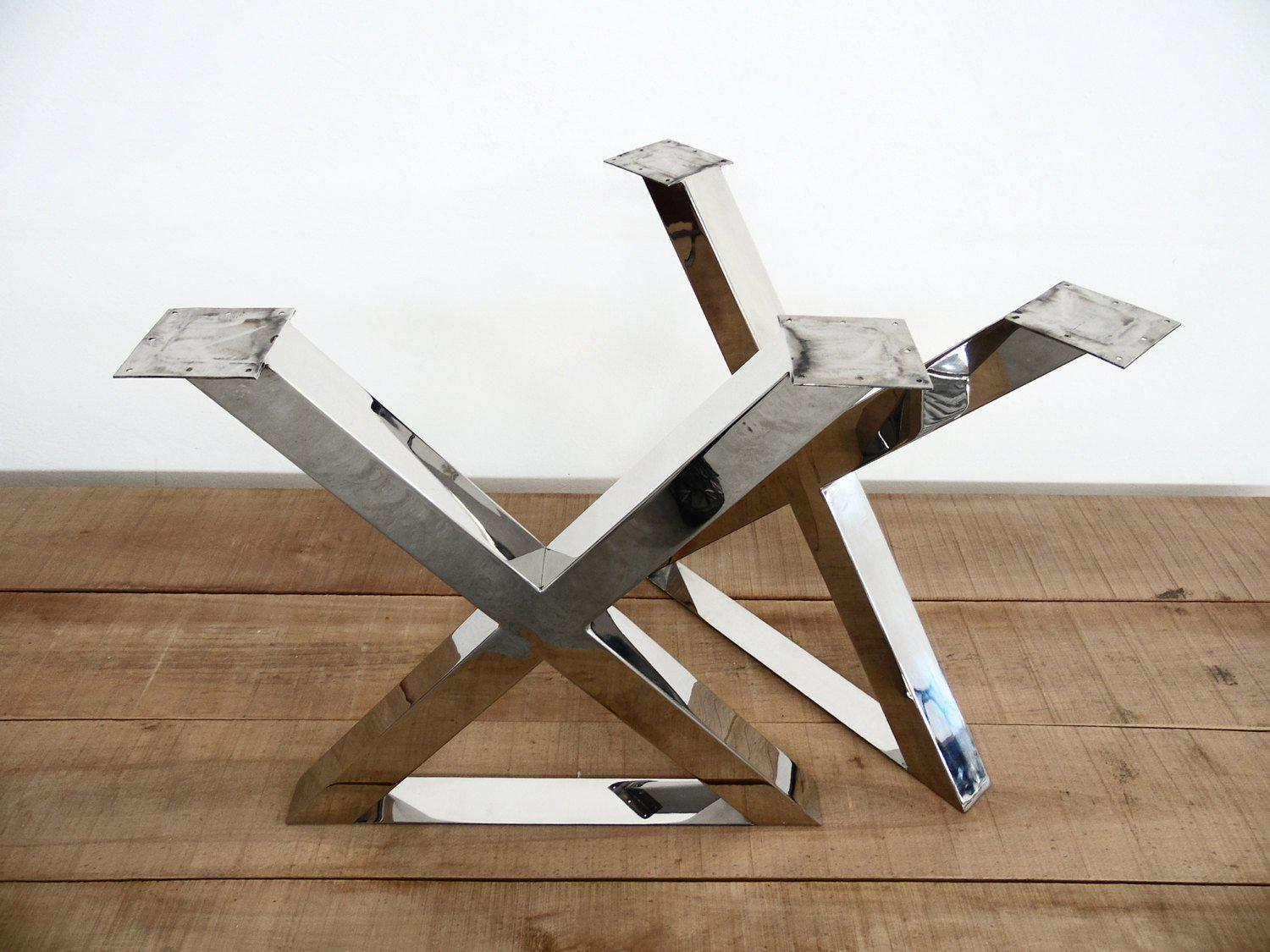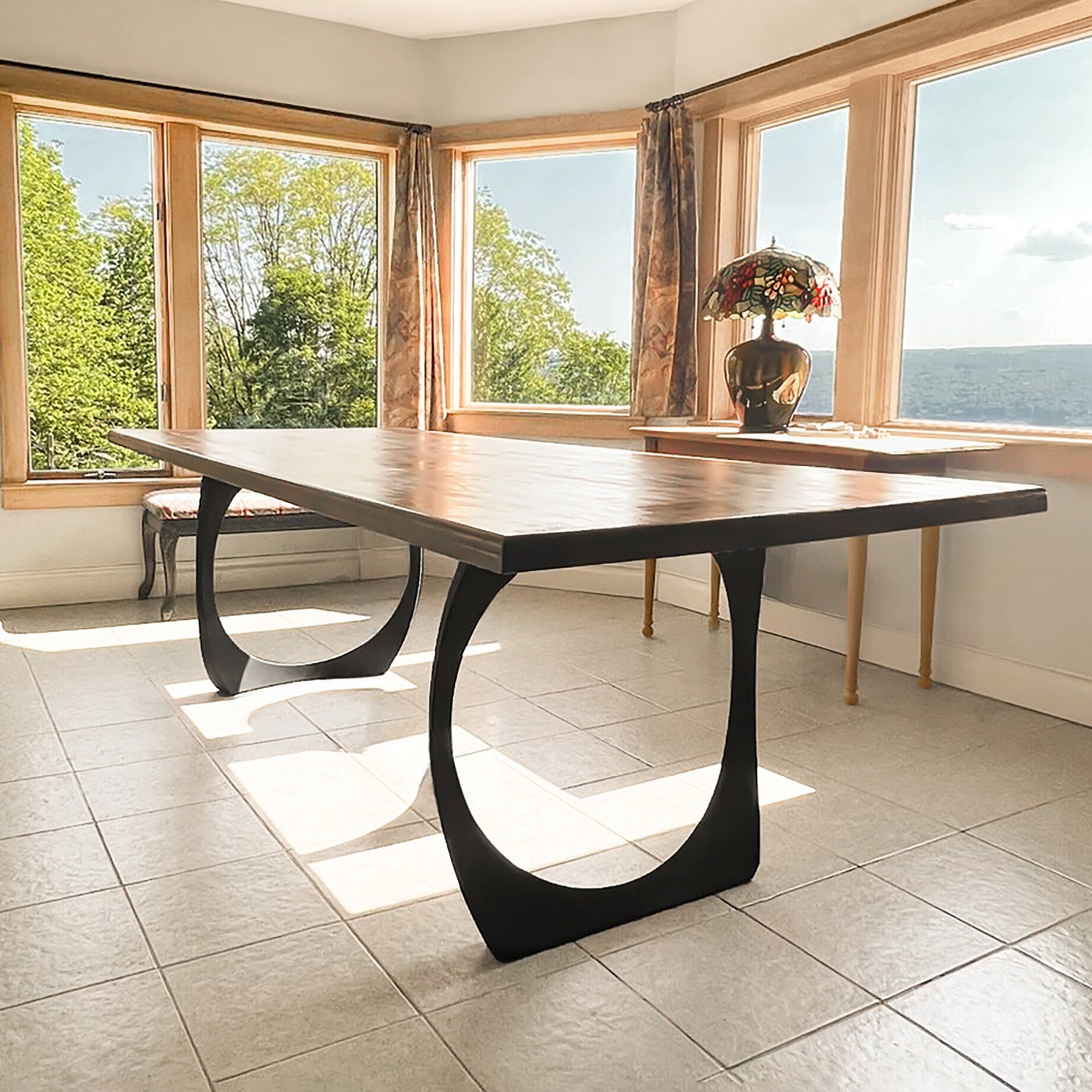A Detailed Appearance at Table Leg Styles: Discovering the Ideal Suit
Picking the ideal dining table leg design is vital for both aesthetic appeal and sensible capability. Conventional four legs supply ageless beauty and security, while the pedestal base provides raised legroom and a contemporary look. For those with bigger tables, trestle legs guarantee tough support, whereas hairpin legs present a mid-century modern ambiance with their minimalist layout. The x-shaped legs blend modern style with improved stability. Each of these alternatives brings distinct advantages, making the option greater than just an issue of preference. Discover even more to uncover which style flawlessly matches your eating space and way of living.
Conventional Four Legs
Amongst the numerous sorts of table leg styles, the conventional four-leg design stays a classic option for lots of houses. This timeless configuration provides a harmonious blend of performance and visual appeals, making it a perennial favorite. Four legs offer balanced support, guaranteeing the table stays steady and with the ability of bearing considerable weight. This is especially helpful for families that often hold big events or utilize their dining table for multiple purposes, such as job or crafting.
From a visual perspective, the traditional four-leg layout can be conveniently adapted to various interior styles. Whether crafted from wood, steel, or a mix of materials, these legs can be intricately sculpted, smooth and minimalistic, or anything in between. Their flexibility allows them to enhance both rustic and contemporary settings flawlessly.
Additionally, the simple structure of the four-leg style helps with ease of activity and placement within an area. Unlike more complex bases, this design minimizes blockages, offering enough legroom for restaurants. In summary, the standard four-leg table leg design marries sustaining beauty with sensible performance, making it a sharp option for those looking for both type and feature in their dining furnishings.
Pedestal Base
Commonly celebrated for its sophisticated and space-efficient design, the stand base is a prominent choice to the standard four-leg setup in table leg designs. This distinctive base commonly features a solitary central column supporting the table top, which can vary in type, from ornately sculpted timber to sleek, modern-day steel. One of the main benefits of the pedestal base is its capability to take full advantage of legroom and seating adaptability. Without corner legs, diners are managed greater flexibility of motion, making it an ideal option for round and oblong tables that advertise even more intimate and inclusive events.
The main column itself provides a canvas for intricate layouts and artistic expressions, including a component of aesthetic interest below the table. In recap, the stand base integrates functionality with design, making it a fine-tuned and useful alternative for diverse eating atmospheres.
Trestle Legs
Trestle legs offer a durable and ageless structure for dining tables, characterized by their straight cross-bracing and sturdy assistance beams. Stemming from medieval times, this layout has advanced yet kept its essential framework, making it a perennial favorite in both typical and contemporary setups. The central trestle light beam, frequently sustained by two or more vertical blog posts, provides exceptional security, permitting bigger table lengths without the requirement for added legs.
A considerable benefit of trestle leg tables is the ample legroom they use. Unlike tables with 4 corner legs, the absence of obstructions at the table's edges supplies unblocked space for chairs and diners, boosting convenience and ease of access. This makes trestle tables excellent for accommodating larger celebrations, whether in an eating room or a banquet hall.
The visual convenience of trestle legs is noteworthy. Offered in a selection of products such as timber, metal, and composite, they can be finished to match a large array of interior styles. From rustic farmhouse to sleek contemporary styles, trestle legs can be personalized to match specific preferences. Their enduring appeal and functional benefits make trestle legs a compelling option for those seeking both style and functionality in their table.
Hairpin Legs

The appeal of barrette legs depends on their simplicity and adaptability - dining room table legs. Readily available in a range of products, consisting of steel and brass, they can be finished in various shades to enhance different interior designs. Whether coupled with a rustic wooden tabletop or a contemporary glass surface area, barrette legs easily blend performance with a touch of classic beauty
Durability is one more significant attribute of barrette legs. Despite their fragile look, these legs are engineered to bear substantial weight, making sure the eating table continues to be secure and secure. Additionally, they are relatively simple to set up, making them a prominent option for do it yourself fanatics and specialist furnishings manufacturers alike.
X-Shaped Legs

Constructed from materials such as steel, timber, or a combination of both, X-shaped legs can be tailored to match numerous style choices. Steel legs frequently provide a smooth and commercial feeling, suitable for loft-style homes and modern dining rooms. On the various other hand, wooden X-shaped legs use a warmer, more rustic appeal, appropriate for farmhouse or diverse interiors. The adaptability in products permits property owners to personalize find out here now their eating tables to better fit their overall style system.
Additionally, the design behind X-shaped legs makes certain also weight circulation, minimizing the danger of tottering and improving longevity. This makes them specifically fit for bigger eating tables that call for added assistance. In significance, X-shaped legs mix sensible design with modern-day visual appeals, making them a timeless choice for diverse dining environments.
Conclusion
A comprehensive understanding of eating table leg designs discloses the distinct attributes and advantages of each style. Conventional four legs offer security and classic charm, while pedestal bases provide legroom and a structured look. Trestle legs make sure robust support for bigger tables, and barrette legs introduce a mid-century modern visual. X-shaped legs incorporate contemporary design with boosted security. Choosing the suitable leg design makes sure both practical and aesthetic satisfaction in any kind of eating space.